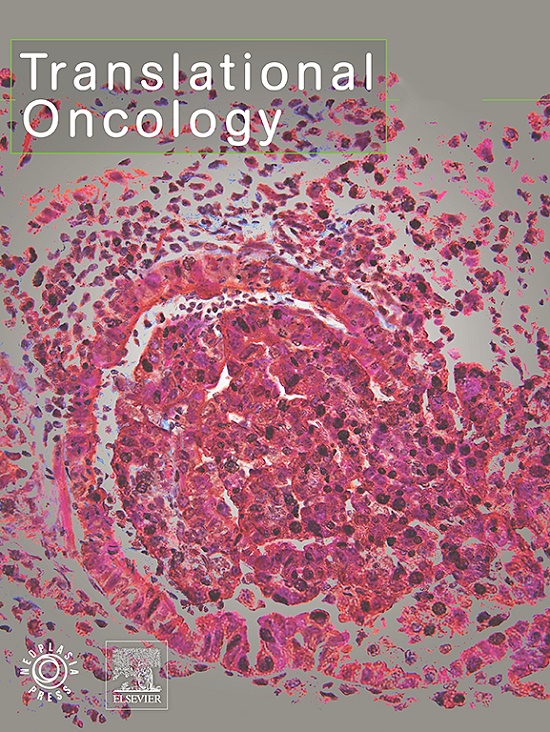MetInfilt: A prospective trial highlighting the importance of the histological growth pattern in brain metastases
IF 5
2区 医学
Q2 Medicine
引用次数: 0
Abstract
Background
While the histological growth pattern (HGP) of liver metastases is frequently evaluated, the same attention is often absent for brain metastases despite evidence suggesting its prognostic significance. This oversight may stem from the lack of a standardized method for assessing the HGP at the macro-metastasis / brain parenchyma interface (MMPIbrain). MetInfilt is the first prospective, imaging-guided trial aimed at standardizing the collection and analysis of the HGP at the MMPIbrain.
Methods
We recruited fifty patients. The MMPIbrain was identified using preoperative contrast-enhanced T1-weighted MRI. Intraoperative confocal microscopy (CONVIVO) visualized the MMPIbrain, while a YELLOW 560 nm filter in the surgical microscope facilitated precise tissue sampling. Samples from the MMPIbrain and the core of the metastasis were collected for postoperative histological confirmation.
Results
The protocol achieved successful tissue acquisition from the MMPIbrain in 93.2 % of patients, meeting the study's primary endpoint. Preoperative MRI patterns strongly correlated with infiltrative HGPs, and CONVIVO accurately visualized the MMPIbrain intraoperatively. Exploratory analyses suggest that infiltrative HGPs might negatively impact patient prognosis and represent a potential risk of meningeal metastasis.
Conclusions
Our neurosurgical protocol allows the successful and precise acquisition of tissue from the MMPIbrain through presurgical imaging, intraoperative microscopy, and fluorescence-assisted sampling. The evaluation of the HGP in our limited patient cohort highlights its potential clinical significance and supports the urgent necessity to investigate it further for the benefit of patients with brain metastases.
Clinical trial registration number
Z-2019–1307–9.
MetInfilt:一项前瞻性试验,强调脑转移的组织学生长模式的重要性
虽然肝转移的组织学生长模式(HGP)经常被评估,但脑转移往往缺乏同样的关注,尽管有证据表明它具有预后意义。这种疏忽可能源于缺乏一种标准化的方法来评估大转移灶/脑实质界面(MMPIbrain)的HGP。MetInfilt是第一个前瞻性的、成像引导的试验,旨在标准化mmpi脑HGP的收集和分析。方法招募50例患者。术前使用对比增强t1加权MRI确定mpibrain。术中共聚焦显微镜(CONVIVO)显示mmpi脑,而手术显微镜中的黄色560nm滤光片有助于精确的组织取样。术后采集mmpi脑及转移灶核心标本进行组织学确认。该方案在93.2%的患者中成功地从MMPIbrain获得了组织,达到了研究的主要终点。术前MRI模式与浸润性hgp密切相关,CONVIVO准确显示术中mmpi脑。探索性分析表明,浸润性hgp可能会对患者预后产生负面影响,并具有脑膜转移的潜在风险。结论:通过术前成像、术中显微镜和荧光辅助取样,我们的神经外科方案可以成功和精确地获取MMPIbrain组织。在我们有限的患者队列中对HGP的评估强调了其潜在的临床意义,并支持进一步研究其对脑转移患者的益处的迫切必要性。临床试验注册号z -2019 - 1307 - 9。
本文章由计算机程序翻译,如有差异,请以英文原文为准。
求助全文
约1分钟内获得全文
求助全文
来源期刊

Translational Oncology
ONCOLOGY-
CiteScore
8.40
自引率
2.00%
发文量
314
审稿时长
54 days
期刊介绍:
Translational Oncology publishes the results of novel research investigations which bridge the laboratory and clinical settings including risk assessment, cellular and molecular characterization, prevention, detection, diagnosis and treatment of human cancers with the overall goal of improving the clinical care of oncology patients. Translational Oncology will publish laboratory studies of novel therapeutic interventions as well as clinical trials which evaluate new treatment paradigms for cancer. Peer reviewed manuscript types include Original Reports, Reviews and Editorials.
 求助内容:
求助内容: 应助结果提醒方式:
应助结果提醒方式:


